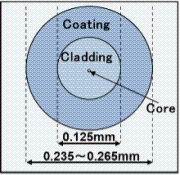
Figure 2 Profile of standard single-mode optical fiber
International Joint Research Team
The research team participating in this study are as follows.
・NICT Photonic Network Laboratory: Design and development of transmission system
・Aston University (UK): Development of Raman amplifiers, supported by EPSRC Grants EP/V000969/1, EP/R035342/1 and Royal Society grant IES/R3/223001.
・Nokia Bell Labs (USA): Development of optical gain equalizers
・Amonics (Hong Kong): Development of optical fiber amplifiers and Raman amplifiers
・University of Padova (Italy): Participated in transmission experiments
・University of Stuttgart (Germany): Participated in transmission experiments
Terabit
One terabit is one trillion (1012) bits. One gigabit is one billion (109) bits.
Standard optical fiber
According to international standards, the outer diameter of the glass (cladding) of optical fibers is 0.125 ± 0.0007 mm, and the outer diameter of the coating layer is 0.235 to 0.265 mm. The optical fiber widely used in optical communication systems is a single-core single-mode fiber with an outer diameter of 0.125 mm, and the capacity limit is considered to be about 100 terabits per second in the conventional C and L-bands.
Transmission bands (OESCLU) / Wavelength bands (Optical fiber transmission windows)
Various wavelength bands for optical fiber transmission, as summarized in Figure 3, are distinguished by regions with different transmission characteristics arising from physical properties of the fiber and amplifier technology. The C-band (wavelength 1,530 - 1,565 nm) and L-band (1,565 - 1,625 nm) are most commonly used for long-haul commercial transmission, with O-band (1,260 - 1,360 nm), used for short-range or inter data-center links. Recently, S-band (1,460 - 1,530 nm) transmission experiments have been enabled by development of Thulium (T-) doped fiber amplifiers (DFAs) and Bismuth (B-) and Praseodymium (P-) DFAs have been developed for O-band and E-band (1,360 - 1,460 nm). Although T-band (Thousand band, 1,000-1,260 nm) is limited by high fiber loss and limited amplifier options, discrete Raman amplifiers have recently been proposed for U-band (1,625 - 1,675 nm) amplification. In this experiment we use P/B/TDFAs for O/E/S-band, Erbium (E-)DFAs for C/L-bands and new discrete Raman amplifiers for U-band.
Doped fiber optical amplifier
Optical fibers have a very small transmission loss compared to coaxial and other electrical cables, but it is necessary to compensate for attenuation periodically (10s of km) to transmit over long distances. This is usually done in an optical amplifier which may amplify many wavelength (WDM) channels simultaneously. A common practical amplification method uses rare-earth doped fibers. By adding a small amount of rare earth ions such as erbium, thulium or bismuth ions to the base material of an optical fiber, amplification can be achieved by exciting these ions with shorter wavelength pump lasers to amplify signal photons through stimulated emission. Such amplifiers have significantly increased the fiber transmission range and allow amplification of many wavelength channels simultaneously. Recent wide-band transmission systems have also employed alternative amplifiers such as Raman amplification and semiconductor optical amplifiers.
Discrete and distributed Raman amplification
Raman amplification is based on stimulated Raman scattering, where signal photons induce the inelastic scattering of a shorter wavelength 'pump' photon in a non-linear optical medium. When this occurs, additional signal photons are produced, with the surplus energy resonantly passed to the vibrational states of molecules in the fiber core. This process allows all-optical amplification in optical fibers with the gain depending on the material of the fiber core. Discrete Raman amplifiers typically use dedicated non-linear fibers and pump lasers to provide Raman gain at specific wavelengths. Distributed Raman amplification injects pumps directly into the transmission fiber to boost signal channel power during transmission.
Optical gain equalizer
Equipment that adjusts the relative intensity of light signals at different wavelengths. Among various technologies one approach for gain equalization uses an optical diffraction grating and a spatial light modulator. In this study, we used custom designed optical gain equalizers to control hundreds of WDM channels across O and E-band signals.
Multi-band wavelength division multiplexing (WDM) technology
Wavelength division multiplexing (WDM) is a method of transmitting optical signals of different wavelengths within a single optical fiber. WDM is a widely used technology to increase the transmission capacity in proportion to the number of wavelengths. In current optical fiber transmission systems, typically only C-band and occasionally L-band wavelengths are used. Wavelength bands such as T-band, O-band, E-band, S-band, and U-band have not yet been commercialized but are currently under research in labs around the world. Large WDM systems using many bands are often called Multi-band WDM systems.
Quadrature-amplitude modulation (QAM)
QAM is a technique for modulating information data on optical signals using multiple levels of both phase and amplitude of the optical wave, that can enable very high spectral information density. 256-QAM uses 256 different signal symbols and can therefore encode 8 bits of information (28 = 256 bits) in each symbol. The spectral density of 256-QAM is therefore 8 times higher than for simple modulation formats such as on-off keying. 64-QAM symbols can encode 6 bits in 64 levels while 16-QAM symbols code 4 bits in 16 symbol sets. QAM symbols may also be transmitted in both polarizations simultaneously, increasing the number of bits transmitted in each dual polarization (DP) symbol to 16, 12 or 8 for DP-256QAM, DP-64QAM and DP-16QAM respectively.
Generalized mutual information (GMI)
Generalized mutual information is a measure of the amount of shared information between the transmitted and received signals and provides the number of bits per symbol that can be successfully transmitted after decoding, assuming the presence of an optimal error correction code. The data-rate estimated from the GMI is an upper bound and typically higher than the data-rate obtained with the available error correcting codes implemented in real systems.
Past achievements in wideband transmission experiments
Figure 4 shows wideband (>15 THz), high data-rate (>100 Tb/s) transmission experiments in single-mode fibers. Previous NICT contributions are highlighted in red. The previous record was a 2023 European Conference on Optical Communications (ECOC) paper ‘301 Tb/s E, S, C+L-Band Transmission over 212 nm bandwidth with E-band Bismuth-Doped Fiber Amplifier and Gain Equalizer’.
New type of optical fiber
An alternative method of increasing the transmission capacity of optical fibers is by utilizing the spatial domain to support multiple communications channels in the same fiber. This can be in multi-core fibers where many cores are supported in the same cladding or multi-mode fibers where an enlarged core supports many modes. Such fiber requires large changes to optical communications system design, particularly if the diameter of the fiber increases. Hence, even when designing systems with such fibers, it is advantageous to maximize the capacity of each spatial channel to increase data-rates whilst maintaining the same outer-diameter as standard optical fibers that are widely used for optical communications.
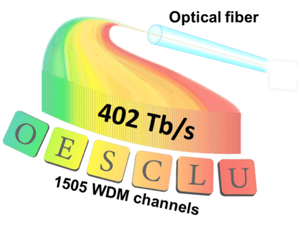

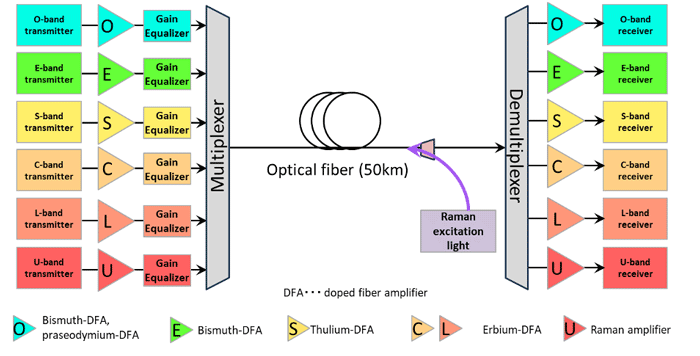
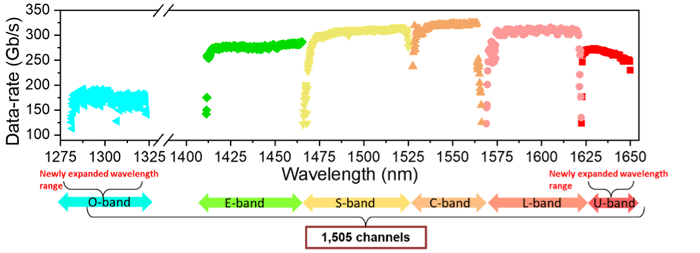


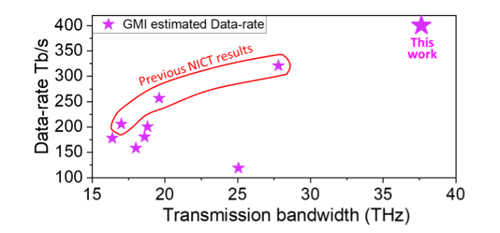
 ml.nict.go.jp
ml.nict.go.jp